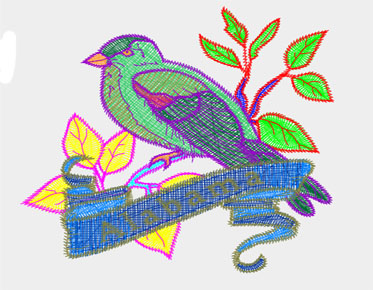You Need To Know This Embroidery Digitizing Terminology - Underlay
While knowing the underlying type wins half the battle, the second half is mastering common terms for setup and usage. When dealing with any kind of software, you will come across some generic terms when looking at the settings. Knowing what these terms mean and then exploring the same will give you a better edge and help make the learning curve less steep. This revisiting of the basics will also help improve efficiency, no matter your skill level. The following content also has some reference value for Eagle digitizing.
Here are insights into common tools and terms you're most likely to encounter when digitizing the bottom line:
Density – The Density tool helps you determine the thickness of your pad stitches. While the standard is 10.5spi, you can increase or decrease the same value depending on your fabric and design requirements.
Angle – This tool helps you adjust the angle on the underlay. For example, when working with leather, in addition to keeping the density low, it is recommended to rotate the backing to 45 degrees.
Stitch Length - This tool will help you determine the length of each stitch in the pad. Very useful when embroidering digital 3D puff designs. While keeping sewing lengths short for smaller sizes and 3D foam designs is the way to go, keep in mind that this will increase your final stitch count
Drop Running Stitch - This setting helps with accurate running stitch placement, with options for anchor points, no chord gaps, and more. While AtAnchor will help you drop the running stitch and penetrate it only at the anchor point, None will allow the running stitch to cover the stitch length, and ChordGap will help shorten the stitch at the top of any curve for a crisp stitch. Also, Maximum Chord Gap will help you set the maximum gap between two points on the Bezier curve.
Inset- This is a term you often hear when starting your embroidery digitization work. It refers to the distance that the backing stitch is placed from the edge of the top (decorative) stitch so that it remains hidden in the final output. While insert A refers to the external inset, inset B helps to establish the internal inset.
Sequence - This tool helps you decide which type of padding should be sewn first. For example, you want to place a vertical axis line before the zigzag for extra support.
Repeat - As the name suggests, this tool comes in handy when you want to repeat an underlay for a location.
Overlay – Sometimes you may want to use a different guide style than the underlay programmed into the settings, and the Overlay tool helps with that.
Eagle Digitizing is one of the leading embroidery digitizing companies in the U.S. with over 25 years of experience. We specialize in providing professional digitizing services for perfect registration and smooth production runs for all your design needs.



